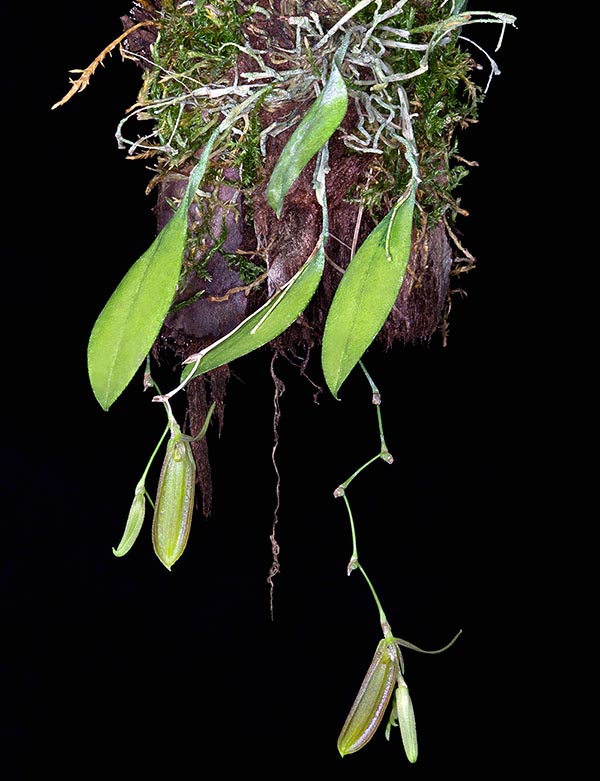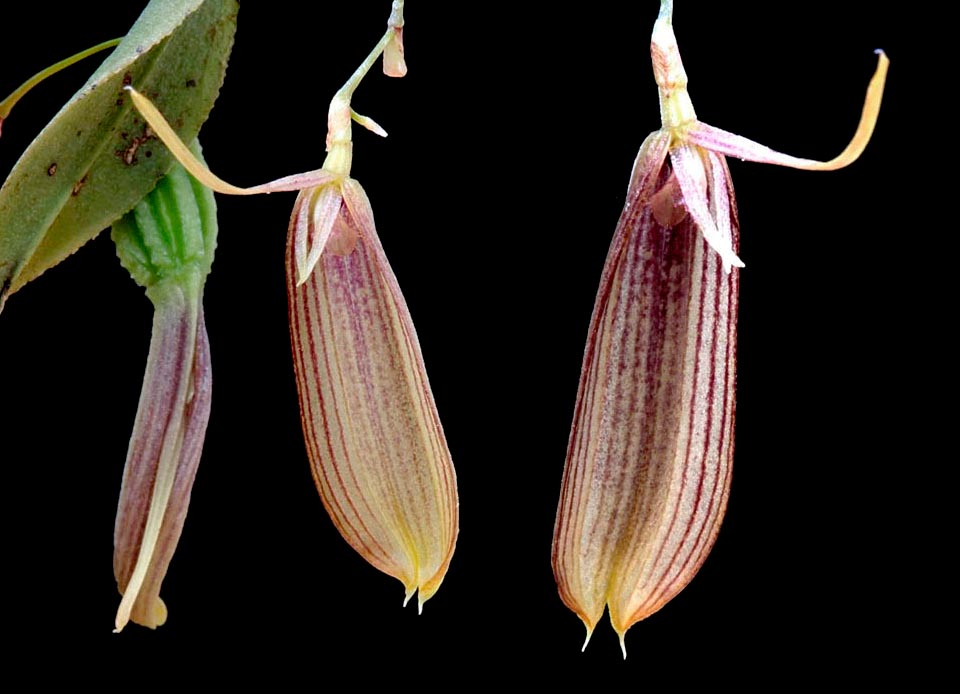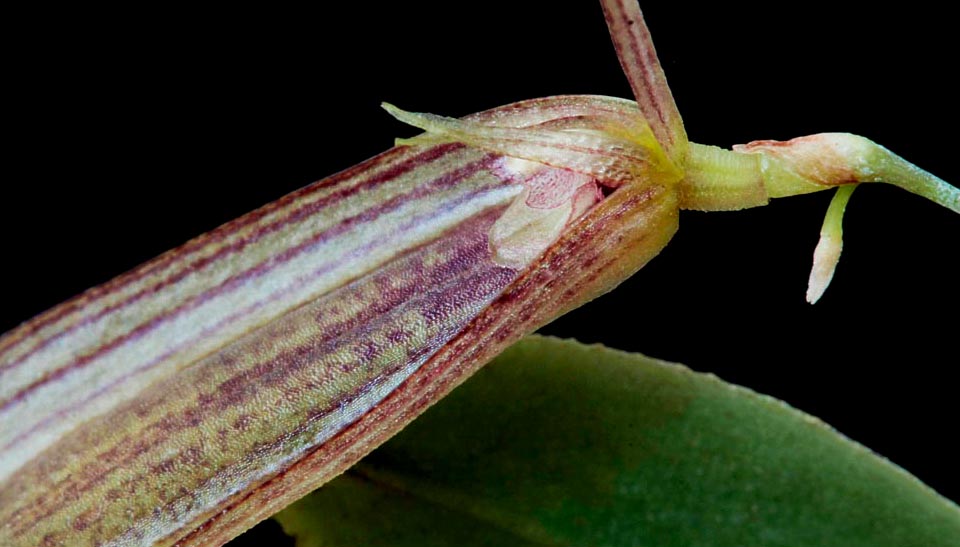Family : Orchidaceae

Text © Pietro Puccio

English translation by Mario Beltramini

The Acianthera erosa is a small epiphyte of the humid mountain forests of the Dominican Republic © Giuseppe Mazza
The species is native to the Domican Republic where it grows on the trees of the humid forests between the 1000 and the 1800 m of altitude.
The name of the genus is the combination of the Greek substantives “ἀκίς” (akis) = tip and “ανθηρά” (anthera) = anther; the specific name is the Latin adjective “erosus, a, um” = eroded, with reference to the margin of the leaves.
The Acianthera erosa (Urb.) A. Doucette (2016) is an epiphytic species with creeping rhizome and thin stems, 1,5-2,5 cm long, provided at the apex of one only sessile lanceolate leaf with curved margin irregularly eroded, 2-3,5 cm long and 0,5-0,8 cm broad, coriaceous.
Drooping racemose terminal inflorescences, one to three, on filiform 1-3 cm long peduncles, bearing numerous tiny flowers with sepals and petals of whitish colour shaded of pale greenish yellow run by thin longitudinal purple lines; the flowers, lasting 2-3 weeks, open gradually one two at a time.
Linear-lanceolate dorsal sepal with acuminate apex, 1,6 cm long and about 1 mm broad, lateral sepals united for almost all their length to form an about 2,3 cm long synsepal, linear-lanceolate petals with acuminate apex, 0,7 cm long and 1 mm broad, trilobed labellum with intermedian ovate lobe, 3,5 mm long, and ovate lateral lobes, 0,5 mm long, and 3 mm long column.
It reproduces by seed, in vitro, and by division, with each section provided of at least 3-4 stems.
Miniature orchid rarely present in cultivation, requires a partial shade, intermediate temperatures, 16-30 °C, high and constant humidity, 70-85%, and constantly moving air. Regular waterings and nebulizations in order to maintain the support or the substratum constantly humid, but without stagnations, utilizing rain water, by reverse osmosis or demineralized at ambient temperature, adding, when the plant is vegetating, a small dose of fertilizer specific for orchids.

The most striking part of the flower is formed by the lateral sepals, about 2,3 cm long, purple streaked and united for almost their whole length © Wiel Driessen
It is usually mounted on small trunks or rafts of bark with some sphagnum at the base, alternatively may be used small pots or baskets wtih very aerated and draining compost based on medium sliced bark fragments, charcoal and sphagnum.
The species is reported in the appendix II of the CITES (species whose trade is internationally ruled).

Close-up of the tiny linear-lanceolate petals with sharp apex and of the trilobed labellum with ovate intermedian lobe © Wiel Driessen
Synonyms: Pleurothallis erosa Urb. (1917); Antilla erosa (Urb.) Luer (2004).
